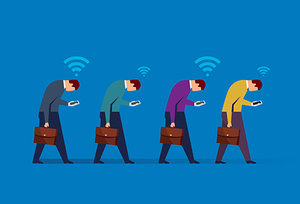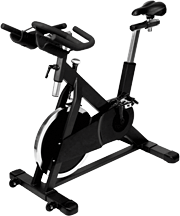It's frighteningly easy to spot forward-head posture – and a primary cause of the condition – these days. Just look around. Anyone who consistently uses their cellphone, tablet or computer either has FHP or is likely on their way to developing it.
Forward-head posture has also been coined "text neck," "tech neck," "nerd neck" and "iHunch," among other amusing monikers. FHP itself is no laughing matter, however; constant hunching of the shoulders, neck and head can not only compromise posture, but also generate pain in those areas. What's more, recent research suggests FHP can actually influence the brain and the messages it receives, potentially affecting other areas of the body and overall function.
Published in the Journal of Gait and Posture, the study involved 160 participants, split evenly among people with forward-head posture and those with normal head alignment. Participants with FHP and resulting biomechanical dysfunction of the spinal column also can negatively impact the brain, namely nerve impulses that travel toward the brain. Researchers specifically evaluated how feedback to the brain from the upper neck (cervical spine) can be distorted by forward-head posture, finding that problems with this feedback (which then impacts the feedback the brain delivers to the muscles) can potentially compromise proprioception and the vestibular system.
 One consequence: A person with forward-head posture may be at higher
risk of experiencing poor balance, upping the risk of clumsiness and/or a
fall. But because FHP can compromise the autonomic system overall, the
condition can have wide-ranging effects on the body. And of course,
that's in addition to the pain and dysfunction generated by forward-head
posture itself. In other words, a major lose-lose situation when it
comes to your health.
One consequence: A person with forward-head posture may be at higher
risk of experiencing poor balance, upping the risk of clumsiness and/or a
fall. But because FHP can compromise the autonomic system overall, the
condition can have wide-ranging effects on the body. And of course,
that's in addition to the pain and dysfunction generated by forward-head
posture itself. In other words, a major lose-lose situation when it
comes to your health.Fortunately, that's where your chiropractor comes in.
Your doctor can not only treat forward-head posture and get you back on the road to wellness; they can also help prevent FHP from occurring in the first place, and certainly minimize the risk of it recurring. Of course, prevention is also up to you, by reducing the activities that can contribute to FHP. Talk to your doctor for more information.




